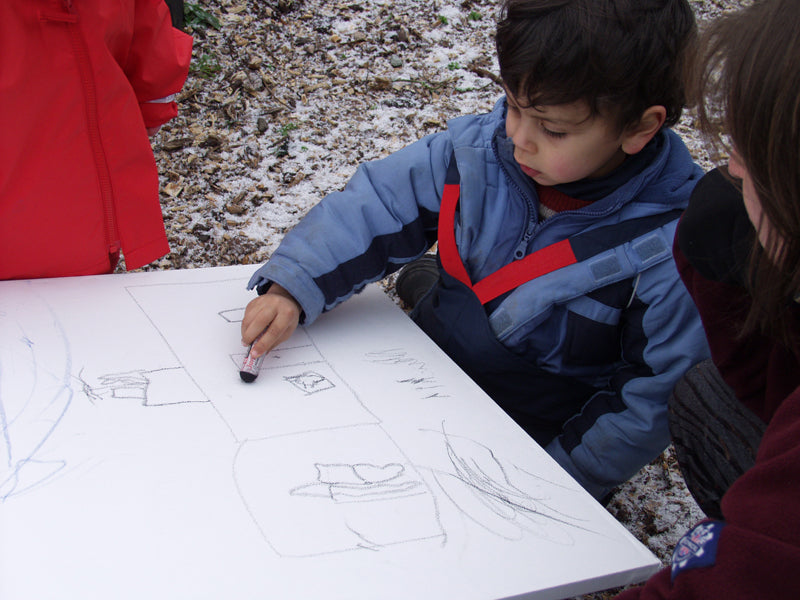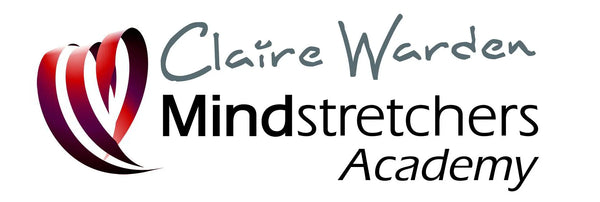
Unlocking the Core Features of a Floorbook for Powerful Collaborative Planning
Dr Claire WardenI often hear practitioners express uncertainty about their Floorbooks: "It doesn't look like traditional planning documents. The pages seem chaotic with children's drawings, quotes, photos at odd angles, and fragments of conversations scattered across multiple spreads."
Here's what I've learned after thirty-five years: effective Floorbooks aren't meant to look like traditional planning documents. They're living records of collaborative thinking, designed to be revisited, built upon, and extended by the very people whose learning they document.
The magic happens when children revisit these pages. Their faces light up as they see their thinking journey documented. They want to add more ideas, ask new questions, and plan what to explore next.
That response reveals something essential about Floorbooks as planning tools.
But what makes a Floorbook truly effective for collaborative planning? What are the core features that distinguish genuine Floorbooks from simple documentation books?
After thirty-five years of developing and refining The Floorbook Approach™, I've identified four essential features that transform scattered documentation into powerful planning tools.
What Makes Floorbooks Different: Interactive Documentation That Sparks Ongoing Inquiry
The first thing you notice about an effective Floorbook is that every page invites participation rather than passive observation. Unlike displays that children look at but don't touch, Floorbook pages are designed for active engagement and extension.
Children revisit and extend existing pages. When a child sees their investigation from last week, they might add new drawings, offer additional theories, or ask an adult to record their latest thinking. The page becomes a growing record rather than a finished product.
Visual elements tell stories children can navigate. All children can follow the narrative thread through photographs, drawings, and symbols. They can revisit their investigations by looking at documented evidence, regardless of whether they can decode written observations.
Questions generate more questions. Instead of providing answers, effective Floorbook pages end with new curiosities and possibilities. "I wonder what would happen if we tried bigger objects?" becomes the bridge to tomorrow's investigation.
Multiple voices appear on single pages. Individual children's ideas combine with peer responses and adult observations, creating rich records of collective thinking. The page becomes a conversation space rather than an individual portfolio.
This interactive quality transforms Floorbooks from documentation tools into thinking tools that actively support children's learning processes.
When Visual Storytelling Becomes Most Powerful
Effective Floorbooks use visual language that speaks directly to children's ways of understanding and communicating, particularly when documentation needs to serve multiple purposes and audiences.
During sustained investigations, photographs capture process rather than just products. Images of children's thinking faces, collaborative discussions, and problem-solving moments help them remember not just what they created, but how they figured things out.
When children's ideas need equal representation, their drawings appear alongside adult documentation rather than being relegated to decorative corners. A child's detailed sketch of a beetle carries as much weight as written observations about their sustained focus.
For navigation and revisiting, simple symbols and icons create visual consistency that children recognize. Question marks for wonderings, speech bubbles for important conversations, or arrows showing connections help children navigate their own learning records independently.
Across extended timeframes, sequential storytelling shows learning journeys rather than isolated moments. This might be a series of photos showing a construction project's evolution, or drawings that reveal how understanding of plant growth changed through observation.
When children can "read" their learning through visual storytelling, they develop metacognitive awareness - understanding not just what they learned, but how their thinking developed over time.
Why Collective Reflection Transforms Planning
The most powerful Floorbooks don't just document what happened - they facilitate ongoing reflection about learning processes and discoveries, particularly when teams need to plan responsively while meeting accountability requirements.
When planning needs to be responsive, open-ended questions invite multiple perspectives rather than seeking predetermined answers. "What surprised you most about how plants grow?" generates diverse responses that build collective understanding and reveal new planning possibilities.
During team planning sessions, thinking prompts scattered throughout pages keep inquiry alive rather than concluding investigations. Questions like "I wonder why..." or "What if we tried..." signal that learning continues beyond current documentation.
For accountability and evidence, children's questions become prominently featured as potential pathways for future exploration. When a child wonders "Do all insects have the same number of legs?", that curiosity gets documented as both learning evidence and planning possibility.
To build learning awareness, metacognitive reflection prompts help children think about their thinking. "How did you figure that out?" "What strategy worked best?" "When did your thinking change?" These insights inform both individual development and collaborative planning.
When reflection becomes embedded within documentation, Floorbooks transform from passive records into active planning tools that continuously generate new learning possibilities.
When Nature-Rich Evidence Shows Breadth & Balance
One concern I hear frequently about child-led learning: "How do I ensure we're covering all required learning areas when children's interests seem focused on specific topics?"
This is where strategic documentation of nature-rich investigations becomes essential for both learning and accountability.
During integrated investigations, the same natural materials support multiple curriculum areas simultaneously. A collection of shells might contribute to mathematical sorting, scientific observation, creative storytelling, and cultural exploration - all documented in the same Floorbook to show learning connections.
Across seasonal cycles, investigations provide natural curriculum coverage that connects to children's lived experiences. Spring planting projects naturally encompass life sciences, measurement, cultural traditions, environmental awareness, and community connections when documented thoughtfully.
When planning needs to show progression, environmental explorations reveal unexpected learning across multiple areas. A simple puddle investigation might generate observations about weather patterns, measurement comparisons, collaborative problem-solving, and creative storytelling - all captured to demonstrate curriculum breadth.
For inspection and quality evidence, place-based learning connects to community standards while honoring children's connection to their immediate world. Local environment explorations often align with curriculum requirements while maintaining authentic engagement when properly documented.
The key is making visible how nature-rich, child-led investigations address multiple learning objectives simultaneously - often more effectively than isolated skill instruction.
The Evidence of Transformation
Settings that implement these core Floorbook features consistently report several outcomes that extend beyond improved documentation.
Enhanced responsiveness to children. Practitioners become more attuned to children's actual interests and developmental needs rather than assumed requirements, leading to more authentic child-led learning.
Increased professional confidence. When documentation clearly shows learning progression and curriculum connections, practitioners develop stronger ability to articulate their practice decisions to families and inspectors.
Stronger accountability evidence. Rich, visual documentation of collaborative learning creates compelling evidence for quality assurance that demonstrates both children's engagement and educational intentionality.
More sustainable practice improvements. Changes that emerge from documented evidence of children's responses tend to stick because they're based on actual learning rather than external pressure.
Enhanced family engagement. When families can see their child's thinking journey through accessible visual documentation, their confidence in the setting's approach increases significantly.
Supporting Your Floorbook Journey
The most effective Floorbooks develop when practitioners understand both their potential and their purpose within collaborative planning approaches.
Floorbooks work best when they're seen as central tools within The Floorbook Approach™ rather than isolated documentation exercises. They gain power when connected to other strategies like Talking Tubs™, Family Books, and responsive planning cycles.
The goal isn't perfect documentation - it's authentic tools that serve children's thinking and collaborative planning in your unique context while meeting professional accountability requirements.
Ready to explore detailed guidance on Floorbook features and implementation?
Our "Collaborative Planning" webinar provides thorough strategies for bringing joy back to your practice while strengthening curriculum accountability.
Remember: the most powerful Floorbooks emerge when documentation serves children's thinking first, with accountability and planning benefits following naturally.
